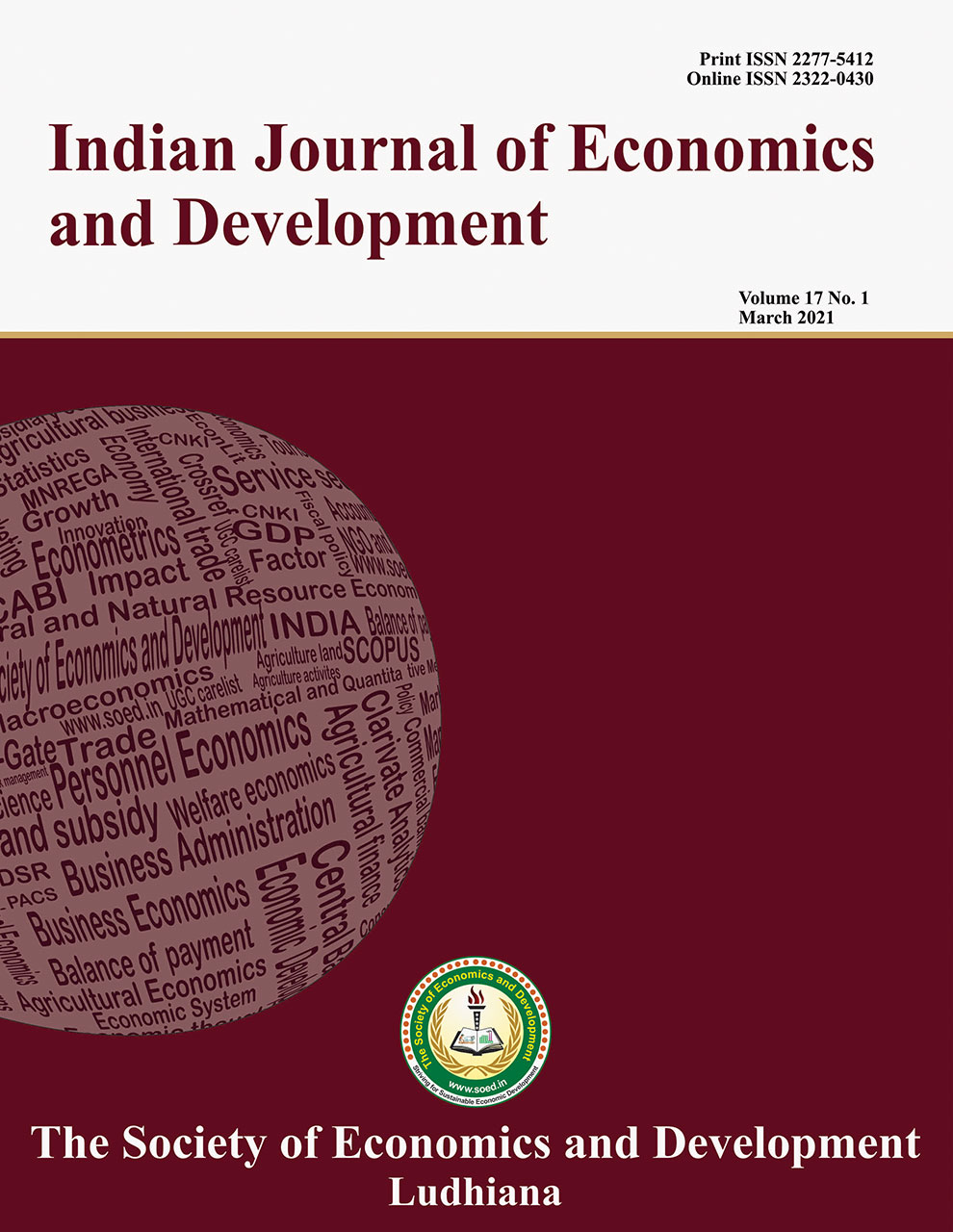Structural Transformation of Punjab Agriculture and its Environmental Implications

Price: ₹ 500
Keywords: Seema Dutta and Sharanjit Singh Dhillon 1* 2
JEL Codes: 1Associate Professor, Post-Graduate Department of Economics, DAV College, Jalandhar-144008 (Punjab) and 2Professor (Retired), Punjab School of Economics, GNDU, Amritsar-143005 (Punjab)
Abstract
As per the Economic Survey of Punjab, (2019-20), Punjab alone contributed more than 1/4 th and 1/3 rd of the central pool of rice and wheat respectively in 2018-19 and accordingly named as bread-basket of India. However, such a huge contribution was due to the structural transformation of agriculture in Punjab under the Green Revolution. Such transformation leads to intensive use of natural resources with mono-culture of wheat-paddy till today, which put a big question mark on the sustainability issue of agriculture in Punjab. The present study was exclusively based on secondary data, covering the period of 1965-66 to 2018-2019, almost 55 years. Hirschman Herfindahl index and Simpson Diversity index were used to determine the extent of concentration and diversification in the cropping pattern of Punjab agriculture. The results highlight the facts that level of diversification was declining and the level of concentration was increasing. Moreover, the Compound Growth Rate (CGR) of yield was either stagnating or declining over the years. Not only this, based on the index of agriculture production, the trend values were negative since the 21 century. Accordingly, st intensive agricultural practices should be stopped, and diversification should get priority in such a way that food security is not jeopardized.
Description
Indian Journal of Economics and Development
Volume 16 No. 4, 2020, 533-546
DOI: https://doi.org/10.35716/IJED/20036
Indexed in Clarivate Analytics (ESCI) of WoS
Scopus: Title Accepted
NAAS Score: 4.82



